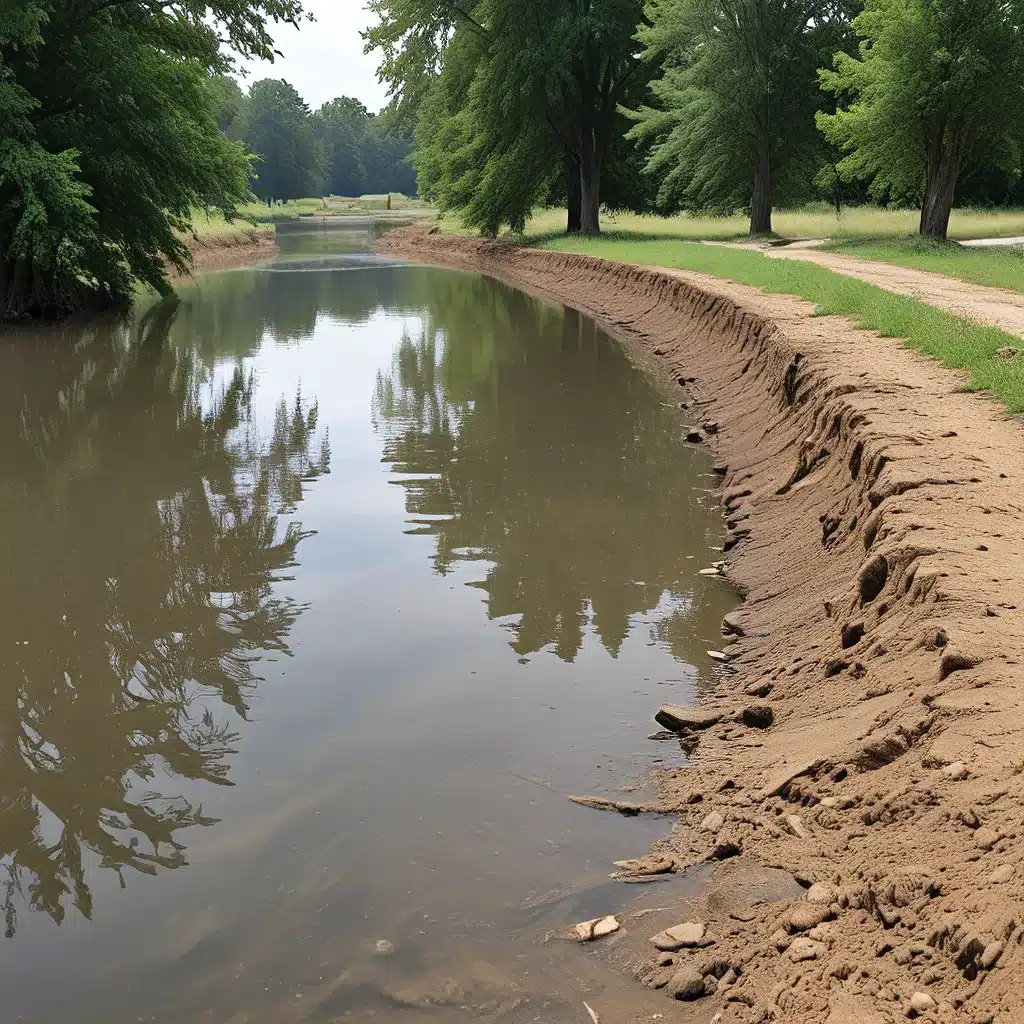
Navigating the Ebb and Flow of Water Challenges
As I sit here, gazing out at the vast expanse of the Inland Waters treatment facility, I can’t help but be struck by the sheer power and complexity of the world’s water resources. It’s a topic that has captivated me for years, and one that is only growing in importance as we grapple with the mounting challenges of climate change, population growth, and environmental degradation.
Recent reports have painted a sobering picture of the state of our water systems, with issues like water scarcity, pollution, and aging infrastructure posing serious threats to communities around the globe. And yet, amidst these challenges, I see glimmers of hope – innovative water management techniques that are empowering crisis mitigation and paving the way for a more sustainable future.
Embracing Adaptability: The Key to Weathering Turbulent Times
One of the core principles of effective water management, I’ve come to learn, is the importance of adaptability. In a world where the only constant is change, our ability to pivot and respond to shifting circumstances can mean the difference between weathering the storm and being swept away by it.
Take, for example, the concept of sustainable urban drainage systems (SUDS). These innovative approaches to stormwater management aim to mimic natural hydrological processes, allowing water to infiltrate the ground or be temporarily stored on the surface, rather than overwhelming traditional drainage systems. By embracing the ebb and flow of water, SUDS can help communities better withstand the increasingly frequent and intense rainfall patterns brought on by climate change.
But adaptability isn’t just about physical infrastructure – it’s also about mindset. As water professionals, we must be willing to challenge our assumptions, explore new technologies, and collaborate with diverse stakeholders to find creative solutions. It’s a mindset that has served the team here at Inland Waters well, as we’ve navigated the ever-changing landscape of environmental regulations, consumer demands, and technological advancements.
Harnessing Renewable Energy: A Fluid Approach to Sustainability
One area where I’ve seen this adaptability in action is in the realm of renewable energy. Renewable energy sources like solar and wind are increasingly being integrated into water treatment and management systems, not only reducing our carbon footprint but also providing a reliable and sustainable source of power.
But the real innovation lies in the way we’re harnessing the power of water itself. Hydroelectric power, once seen as a relic of the past, is undergoing a resurgence as new technologies allow us to extract energy from even the gentlest of waterways. And the potential doesn’t stop there – innovative approaches like wave and tidal power are opening up exciting new frontiers in renewable energy generation.
By embracing the fluid nature of water and its renewable energy potential, we’re not only reducing our environmental impact but also creating a more resilient and self-sustaining water management ecosystem.
Closing the Loop: Circular Water Management for a Sustainable Future
Of course, renewable energy is just one piece of the puzzle when it comes to sustainable water management. Another critical component is the concept of circular water management – the idea of closing the loop on our water usage by recycling, reusing, and repurposing this precious resource.
This isn’t just about treating wastewater and returning it to the environment – it’s about rethinking the entire water cycle and finding ways to extract maximum value from every drop. Whether it’s using treated greywater for irrigation, recovering valuable nutrients from sewage, or deploying advanced purification technologies to turn wastewater into drinking water, the possibilities are endless.
And the benefits extend far beyond the environmental. By closing the water loop, we can reduce our dependency on freshwater sources, lower energy costs, and create new revenue streams – all while building a more resilient and sustainable water infrastructure.
Overcoming Barriers: Navigating the Complexities of Water Management
Of course, transitioning to a more sustainable water management paradigm is not without its challenges. Outdated infrastructure, regulatory hurdles, and public perceptions can all pose significant barriers to progress. But with creativity, collaboration, and a commitment to continuous improvement, I believe we can overcome these obstacles.
One approach that has proven successful here at Inland Waters is the strategic integration of sustainability frameworks into our decision-making processes. By aligning our water management strategies with the principles of environmental, social, and governance (ESG) sustainability, we’ve been able to build stronger partnerships with stakeholders, access new sources of funding, and demonstrate the broader societal and economic benefits of our work.
It’s a holistic approach that recognizes the interconnectedness of water, energy, and environmental systems – and one that I believe is essential for navigating the complex and ever-evolving landscape of water management.
Embracing the Future: A Fluid Vision for Water Resilience
As I look out over the bustling operations of Inland Waters, I can’t help but feel a sense of both humility and excitement. Humility in the face of the immense challenges we face, and excitement at the prospect of the transformative solutions that are emerging.
Because make no mistake, the future of water management is not one of stagnation or resignation – it’s one of innovation, adaptability, and resilience. By embracing the fluidity of water, harnessing its renewable energy potential, and closing the loop on our water usage, we can create a more sustainable, equitable, and prosperous future for all.
And as we continue to navigate the ebb and flow of water-related crises, I’m confident that the liquid legacies we leave behind will empower generations to come to weather any storm that comes their way.


